15 Things To Know Before Hiking In Japan
Hiking in Japan can be like hiking elsewhere, except sometimes it’s not.
My experience hiking in Japan has taught me a lot about the country and what can be expected when hitting the trail or climbing one of its many famous mountains.
Some of what can be found hiking in Japan is great – like free toilet paper and onsens. Other things are terrible – like the persistent ringing of bear bells and the giant hornets that can kill you (and are the things of nightmares).
The following is a collection of the backcountry trivia I’ve learned on my adventures thus far.
Let me know what you think in the comments below!
1. Yes, everyone has a bear bell
Practically everywhere I’ve hiked in Japan, I’ve seen signs warning hikers about bears, and practically everywhere I’ve hiked in Japan, I’ve been plagued by the unmistakable jingling of bear bells. I don’t believe bear bells are required anywhere, but most Japanese hikers use them. Even in areas without bears, bells still ring through the mountains (so are they really bear bells anymore?).
Although I’ve yet to see a bear in the country, I have met hikers who claim to have firsthand experience with Japan’s largest mammal. The Asian black bear can be found in the mountains of Honshū, Kyūshū, and Shikoku (all of Japan that isn’t that big island at the top), and the Ussuri brown bear can be found on the island of Hokkaido (that big island at the top). Occasionally, someone will be mauled and eaten by a bear in the country (the average is less than one death per year), but there are far scarier things in Japan than bears (as you’ll find out below).
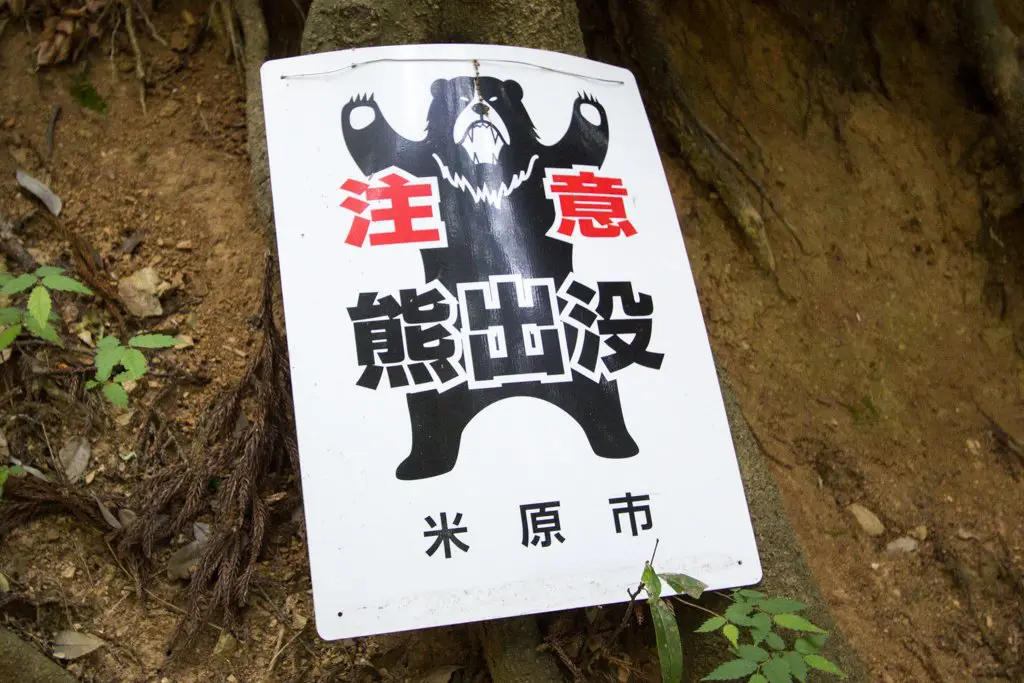
2. No, you’re not underprepared
Heading out for my first summit following my first winter in Japan, I feared that perhaps I had decided to hit the mountains too early for the snow to have melted. Why? Because everyone at the trailhead was wearing huge boots, snow gaiters, jackets, and waterproof pants. Not only that, but they all had rope, harnesses, and ice axes too (and bear bells). I was naked in my trail runners, shorts, and shirt (good thing I like being naked). Not discouraged, I hiked up anyway, and guess what? Zero snow, zero obstacles, and zero reasons to have all that extra gear.
As time went on and the march into summer continued, I quickly learned that this was not simply a one-time phenomenon as we transitioned from winter into summer – even in the middle of August, Japanese hikers come to the mountains fully equipped (to hike through a typhoon in winter). So remember, you’re not underprepared; everyone else is far too overprepared.
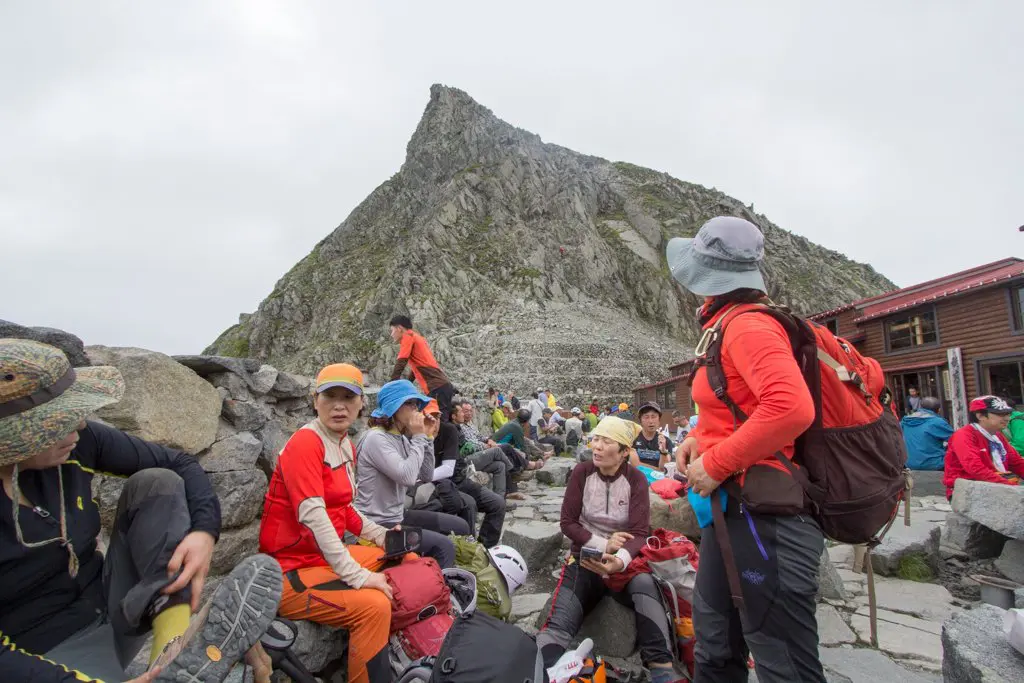
3. The lodges are fully functioning hotels
Another hallmark of mountains in Japan is their lodges. The most prominent mountains of Japan are filled with lodges that do more than allow hikers to escape the elements or refill on water. These lodges (which can cost upwards of $100/night) offer everything from beverages, incredibly overpriced souvenirs, and freshly cooked meals to Wi-Fi, flushing toilets, and the ability to pay with a credit card. Some of the largest lodges have capacities pushing 800 people. Personally, I have a love-hate relationship with these places (but it’s been falling more towards “hate” recently), and although I have never stayed in one, I have benefited from their services (and been asked to pay for sleeping outside on the ground).
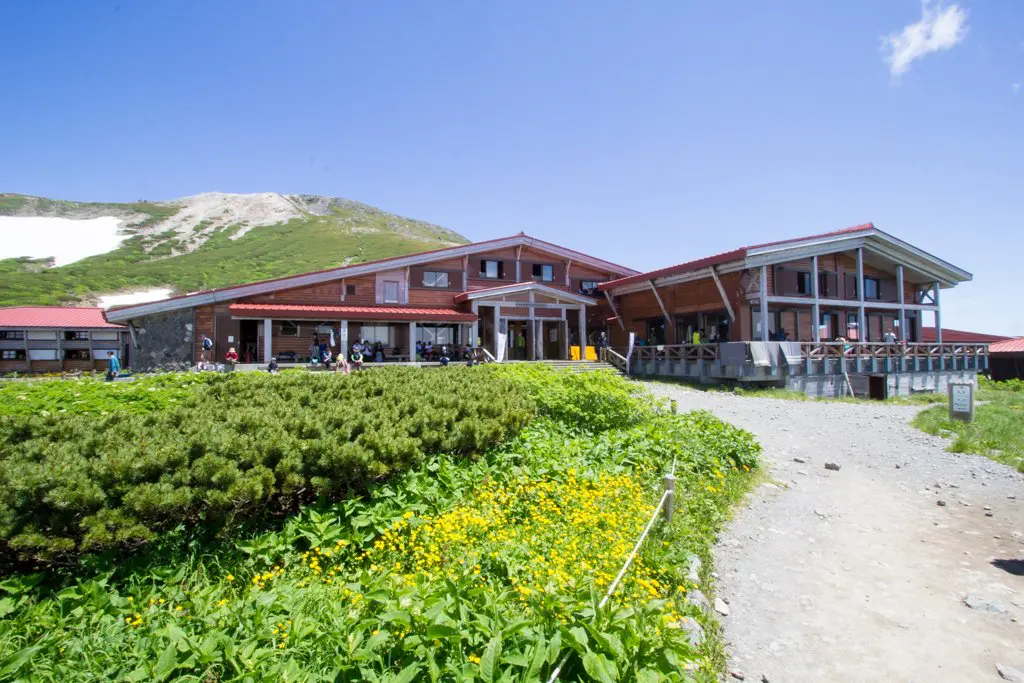
4. People yield – far too early
In the mountains, an unwritten code of conduct exists that people follow to avert disrupting nature’s harmony (and backcountry brawls). One point of this code states that downhill hikers must yield to uphill hikers (however, exceptions exist). When I see a fellow hiker dragging themselves upwards towards me, I pick a spot between us with space to pull off that I know I will reach first. However, in Japan, I have found people coming uphill to yield far too early (similarly to how people merge far too early whilst driving here – it’s a real problem) – as soon as they see me.
Now, sometimes yielding to a downhill hiker can simply be a way to justify a break from climbing, but all too often, people will step off the trail as soon as they see me coming (maybe I am just incredibly intimidating – being not Japanese and all). Basically, if you feel like an ass for passing everyone going downhill when you were going to yield to them, don’t worry too much about it (I know how you feel).
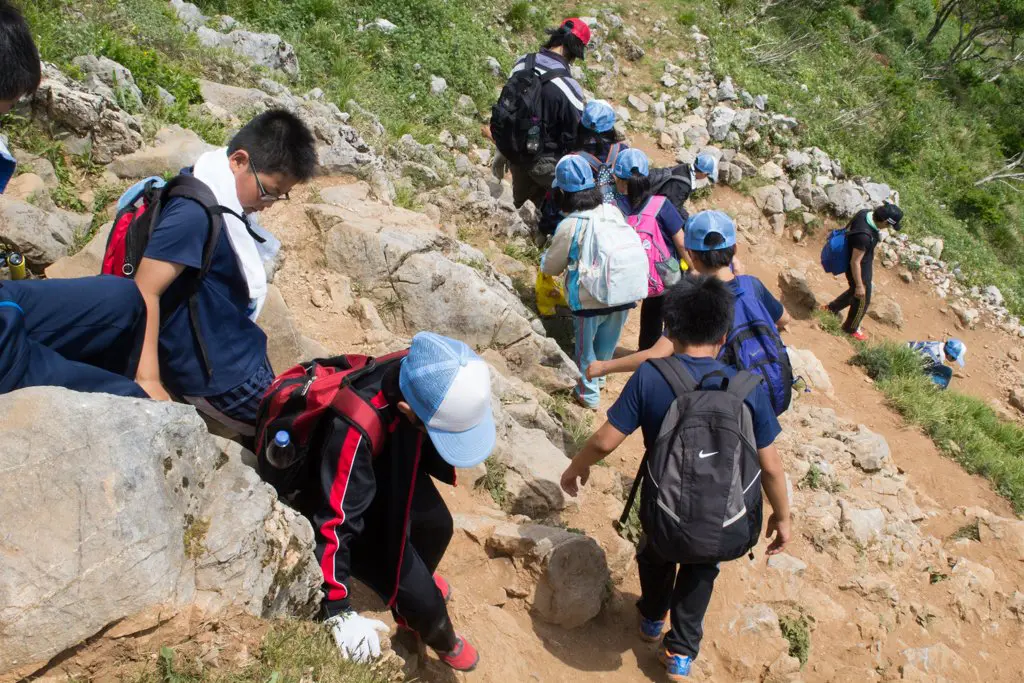
5. Hit the onsen afterward
First of all, if you are in Japan and “go to an onsen” is not on your list of things to do, then chances are you didn’t research “things to do in Japan” very thoroughly (and you should add this item immediately). Many of the major trailheads in Japan are surrounded by onsens (and if you’re wondering what this onsen thing is, then you can read about my first onsen experience here), and heading to one once you descend from the mountains is almost obligatory for Japanese hikers. I have found the mountain onsens to be much more inviting and relaxing than those to be found in cities, and if you’re lucky then you’ll even get to let it all hang out while enjoying a spectacular view of the surrounding mountains or valleys.
Just remember that you’ll want to have a clean change of clothes with you for when you emerge from your soak (not exactly ultralight, but well worth it if the onsen is on your list).
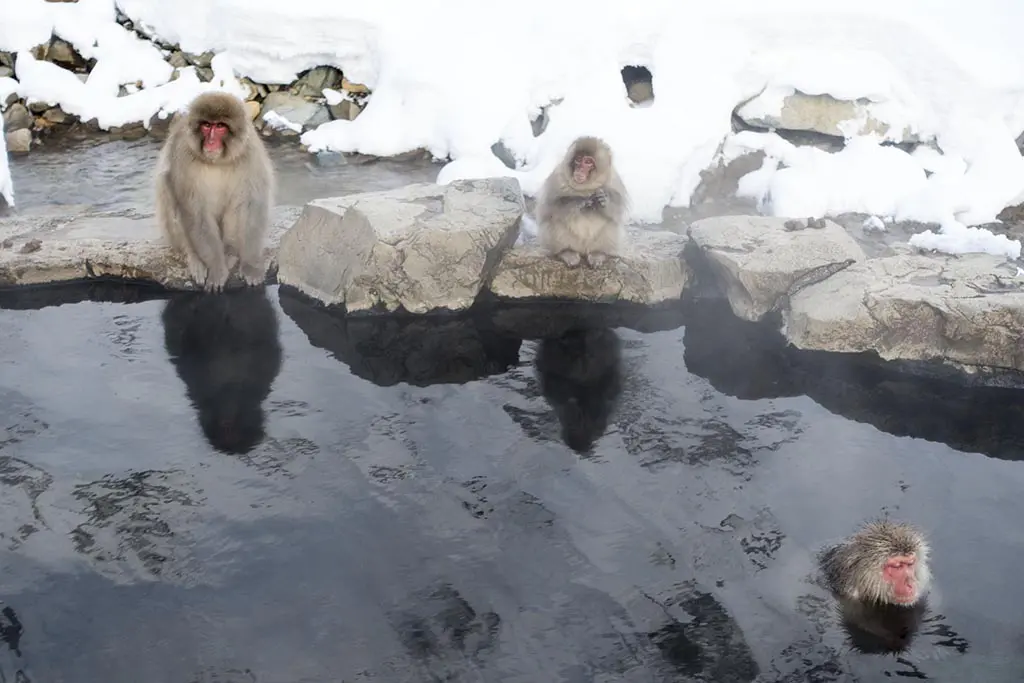
6. Start early – finish early (if you’re Japanese)
Hikers in Japan like to get up early – early. If you plan on sleeping past sunrise, move far away from anyone camping near you. Everyone gets up at the crack of dawn, makes their fancy meals (the idea of going stoveless is impressively more foreign to the mountains than I am), and gets moving early (which I am actually totally on board with). Getting up early will help you avoid any afternoon thunderstorms and make headway before the weather forces you to retreat to your tent (or get off passes and peaks).
However, hikers in Japan stop hiking incredibly early as well. People rarely put in big days, and by two or three in the afternoon, everyone’s already made it to their next lodge and is ready to throw back some ¥1,000 beers. I rarely encounter hikers in the late afternoon or early evening (I don’t think anyone night hikes). Usually, if you plan on making it to some distant (but reasonably close) landmark and it’s already late, people will be shocked if you tell them your day’s destination or ask them for directions. Don’t you worry – I have faith you’ll make it.
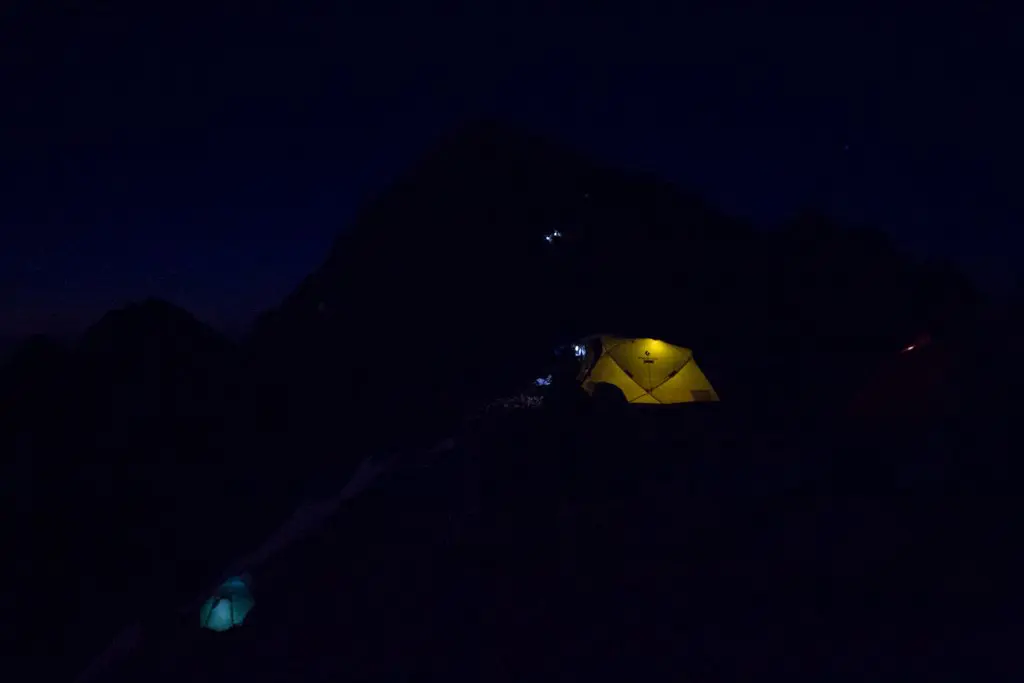
7. The ropes, chains, and ladders
Trail builders in Japan are very fond of affixing ropes, chains, and ladders to the landscape to make routes more accessible and less technical – almost to the point of it being irritating. All alone out in the mountains, you suddenly have a virtual handrail to aid a tricky traverse? Not the greatest of adventures. Admittedly, I have used these ladders, ropes, and chains on occasion to help myself up and down mountains, but many times, they’re completely unnecessary and do a lot more to take away from instead of add to the experience. These fixtures (the ladders in particular) are also excellent at creating bottlenecks and causing trail slowdowns (pro tip: get started before sunrise – even earlier than your Japanese counterparts).
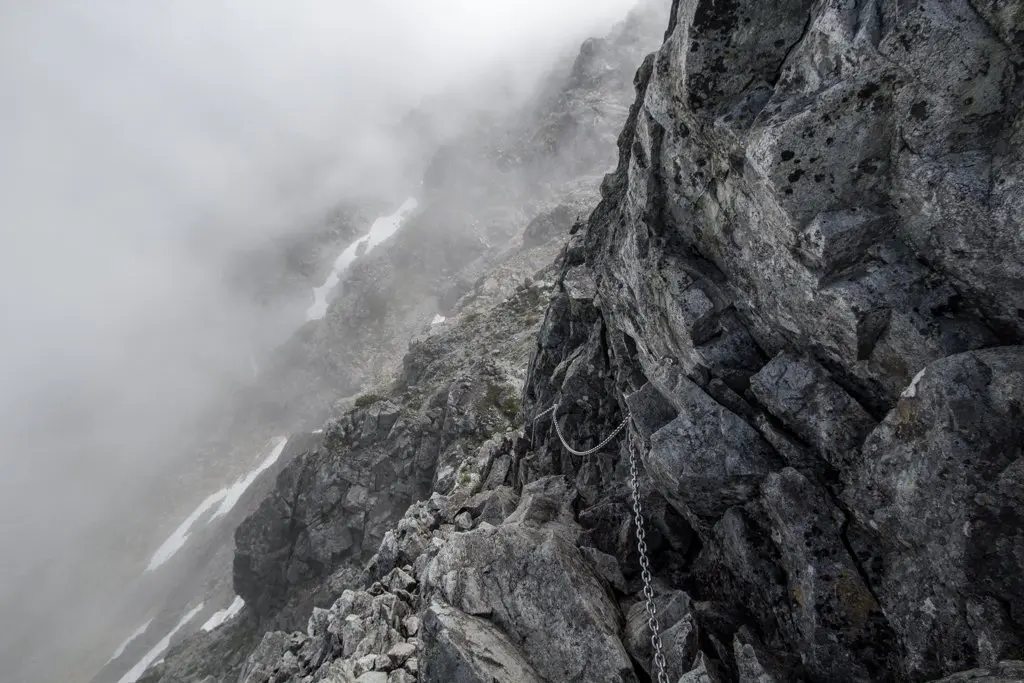
8. Beware the Japanese giant hornet
I’ve already mentioned bear bells and bears, but the reality in Japan is that bears aren’t much of a threat to human life in the mountains. What is a threat is the Japanese giant hornet. These things can be upwards of 1.8 in / 4.5 cm long and have a wingspan of more than 2.4 in / 6 cm, which may not sound that big, but trust me, you’ll think differently once you see one buzzing past your head (they’re terrifyingly huge).
Are you someone who doesn’t like bees? Well, these things literally destroy bees (I’m not kidding) – thirty hornets can completely wipe out a hive of 30,000 bees in just three hours (I’m telling you, follow that link). Apparently, being stung is incredibly painful (go figure), and even if you don’t happen to be allergic (in which case you die from anaphylactic shock), the neurotoxin (called mandaratoxin, MDTX) can still kill humans. Every year, between thirty and forty people are killed by these monsters. Good luck.
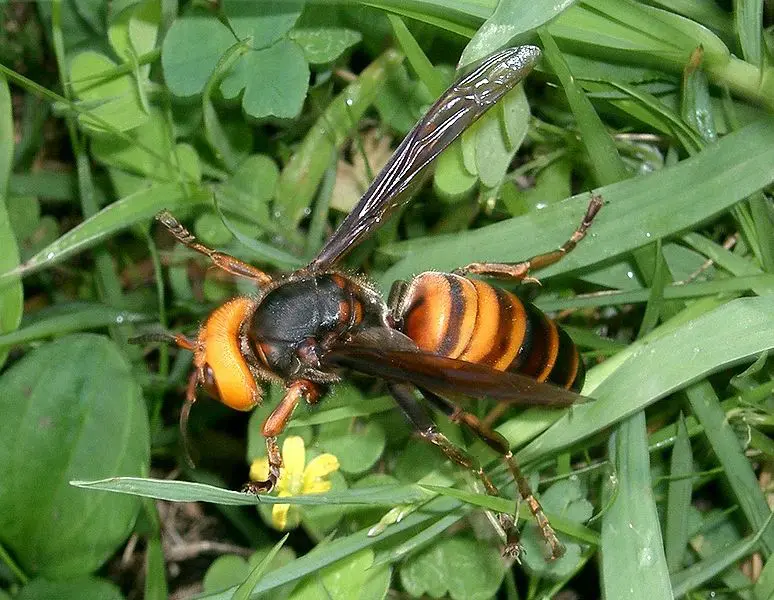
9. Learning some kanji is extremely helpful
First, a kanji is one of those complicated messes of strokes that you see all about you in Japan. Scary, I know. Even for people learning Japanese, kanji are the bane of their studies. However, learning some kanji before you set off (or at least having them written or saved somewhere) can help a lot when you’re alone at that trail junction you didn’t expect to find (or want to make friends with the locals).
So, what kanji should you be learning? At the very least, you should have with you the name of whichever mountain or trail you plan on conquering and the name of your trailhead if it’s available (you should also write down the romanization of these kanji so that you know how to say them if you need to ask someone directions).
Secondary kanji can be those for any nearby peaks or landmarks that could be used for navigation (generally, trails and junctions are well-marked), those for north, south, east, and west (北 kita, 南 minami, 東 higashi, 西 nishi), or the kanji for geographical features such as mountains (山 yama), valleys (谷 tani), and rivers (川 kawa). I guess I will have to write a post on Japanese hiking kanji soon.
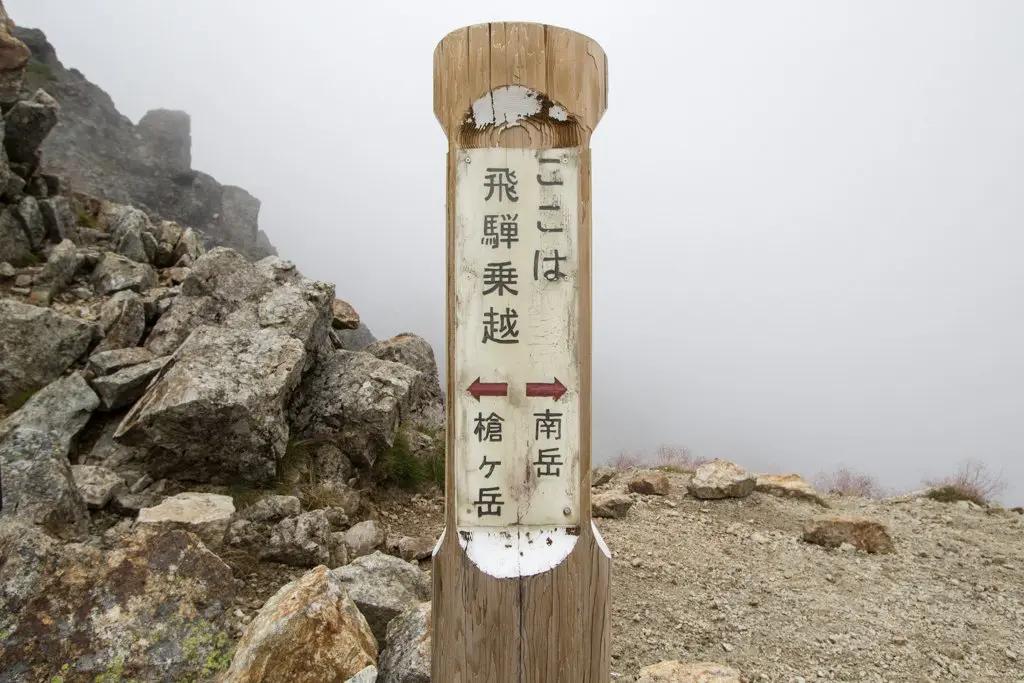
10. Yes, there’s a shrine on top of the mountain
On almost every summit I’ve reached in Japan, there has been a shrine of some sort (obviously there to appease the merciful mountain gods and keep them from blowing up the mountain in a violent explosion). These can be small stone shrines the size of microwaves or huge shrines large enough to walk into (less common). At first, I wasn’t a huge fan of these shrines, but after seeing what sort of damage can be done to summits (like with Fuji and Ibuki), I don’t have much of an issue with the Japanese tradition of mountain god appeasement.
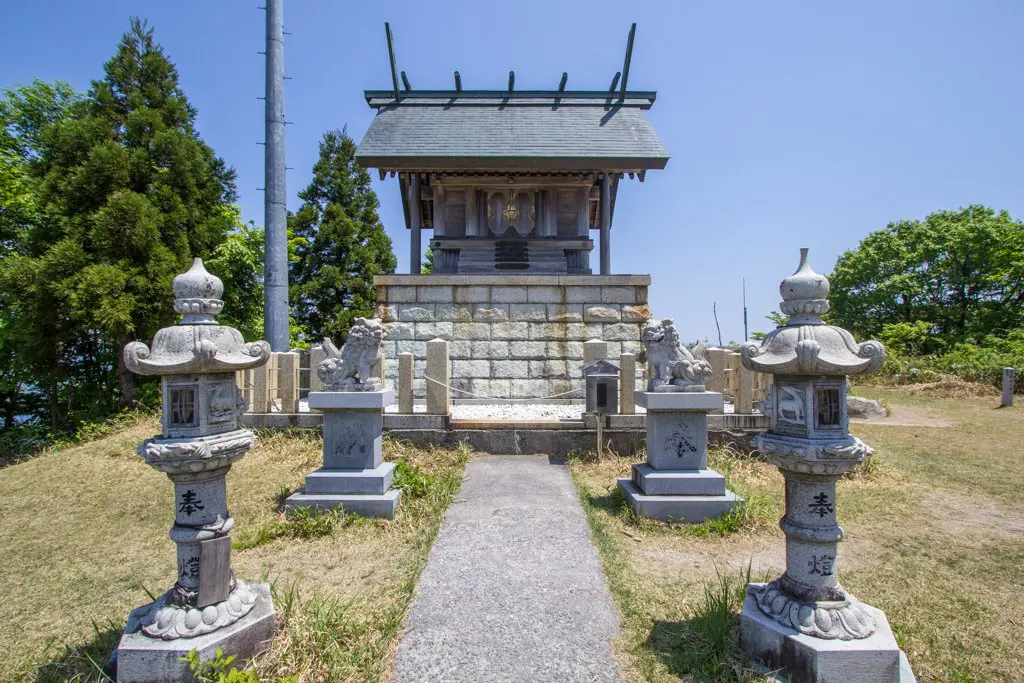
11. Nobody fears you are stealing their toilet paper
Perhaps some context is needed for this one (for those of you who have not yet been reduced to stealing toilet paper from public restrooms). Typically whilst out in the wilderness, I (and many others) carry toilet paper if I need to make a poo without a functioning bathroom nearby. Although toilet paper can be a hot-button issue in the outdoor community, it’s useful to have around in an emergency. Many places nearby (or on) trails will have locks on their toilet paper dispensers, making it difficult for paper to be taken en masse (and usually don’t have extra rolls just sitting around). However, you need not worry about toilet paper being unobtainable in Japan.
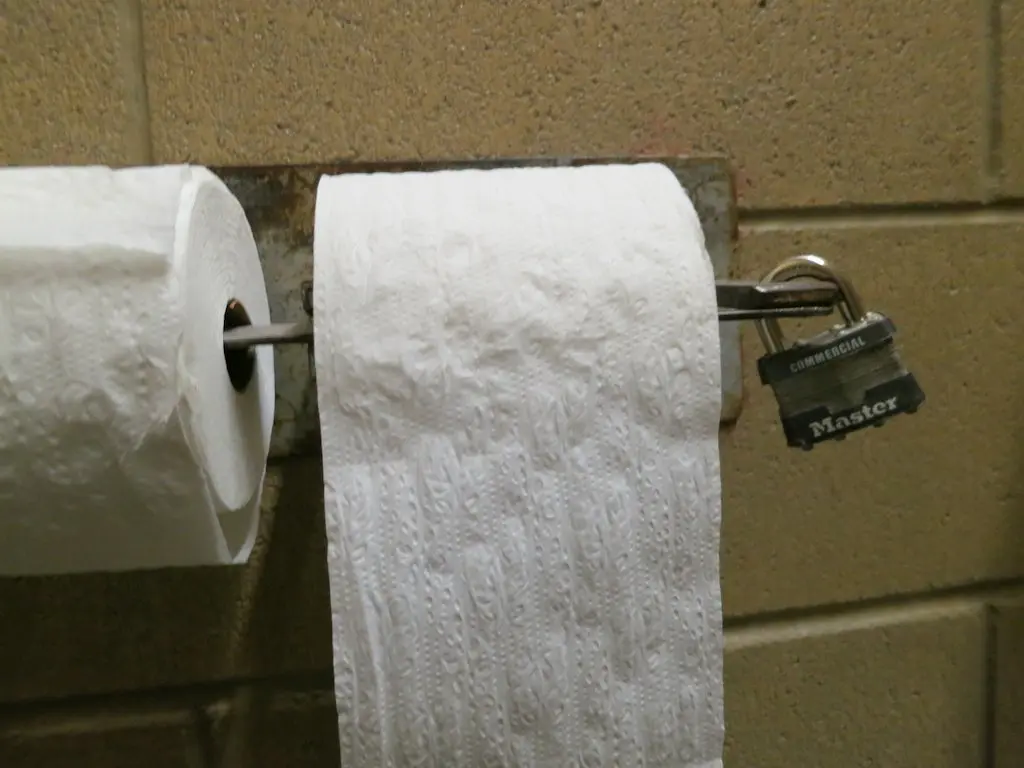
12. Yes, that’s a vending machine you’re seeing
When I was hiking the Pacific Crest Trail, “where the next vending machine was” became a running joke among hikers. The humor in this would fall deafly on Japanese ears because there are, in fact, vending machines in Japan’s mountains. Now, these aren’t necessarily just places along the trail (but sometimes, yes, they are), but should you make it to a lodge (or the summit of Fuji), it may be difficult to believe your eyes (or resist the temptation to pay far too much for a beverage).
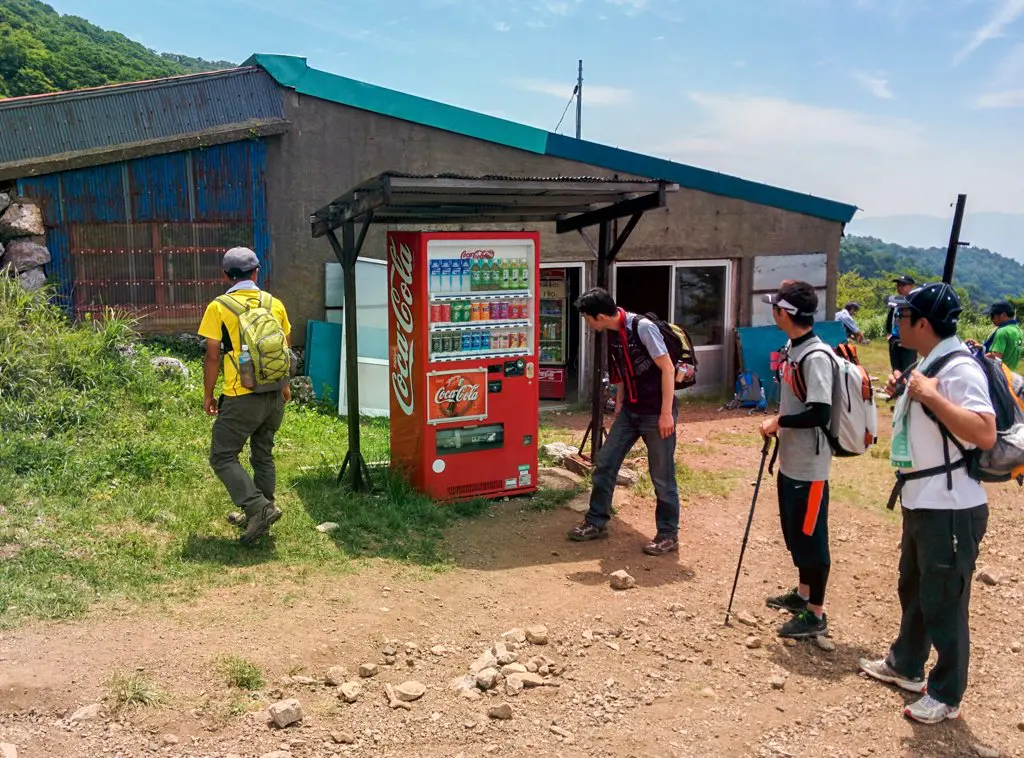
13. Everyone has really expensive hiking boots
I’ve hiked in New Balance trail runners for a while now and don’t have any intention of switching to anything that resembles a traditional boot (and not just because my hiking paradigm was shaped by the PCT). In Japan, I have found it quite rare to encounter anyone out in the mountains with anything short of boots, and these aren’t just any boots – they’re the same boots that everyone else has, and they’re expensive (over two or three hundred dollars). I’ve even been told by employees at the mountain huts that I don’t have the proper footwear to be trekking. These people have even told me that I should not continue and am better off turning around and coming back better prepared. Needless to say, I have yet to end a mountain adventure due to inadequate footwear.

14. Nobody has ever cowboy camped before
If you want everyone to think you’ve got something seriously wrong with you, try your hand at cowboy camping in Japan. So long as the weather cooperates, I sleep without my trusty tent whenever possible. This has gotten me plenty of attention in Japan’s mountains.
“BUT AREN’T YOU COLD!?” Everyone seems to be concerned with how warm I am (when I can’t carve myself out a piece of solitude for the night), but since it’s barely below freezing, I invested in a sleeping bag designed to handle temperatures down to 15 °F / -9 °C (check it out here), it turns out that I’m perfectly fine. Thank you, goose feathers!
On a somewhat related note, around 80% of the campers I have seen have the same two-person tent (I rarely see single-person accommodation).
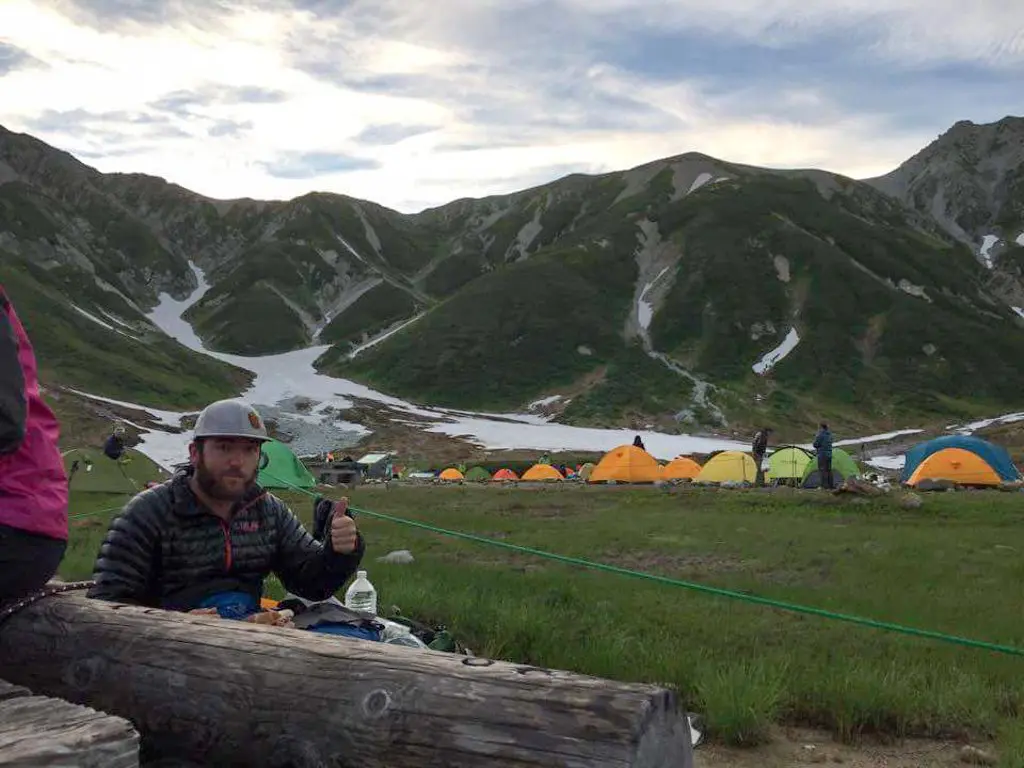
15. Everyone’s food is fancier than yours
This might not apply to all of you (especially those who haven’t yet embraced stoveless travel), but hikers in Japan don’t mess around regarding their food. I wouldn’t be surprised if some of the meals these guys cook aren’t on par with the stuff they make at home. Everyone has a gas stove. They also have pots, skillets, oil, rice (so much rice), vegetables, and noodles. The massive packs that people haul up and down mountains here have always perplexed me – perhaps this is a clue to what they’re hitting the trail with.
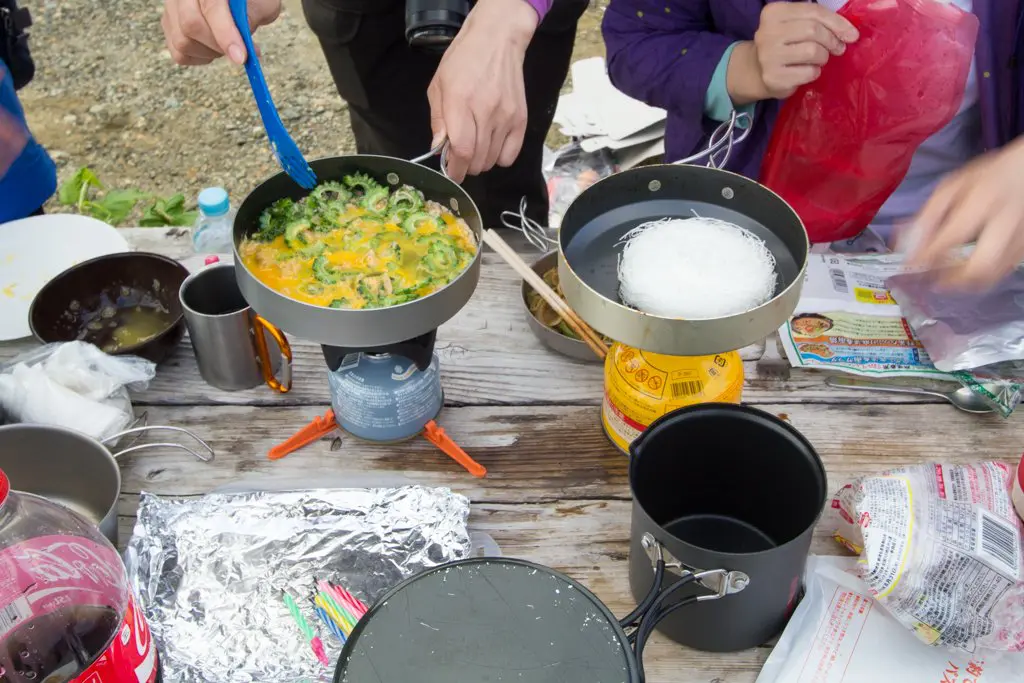
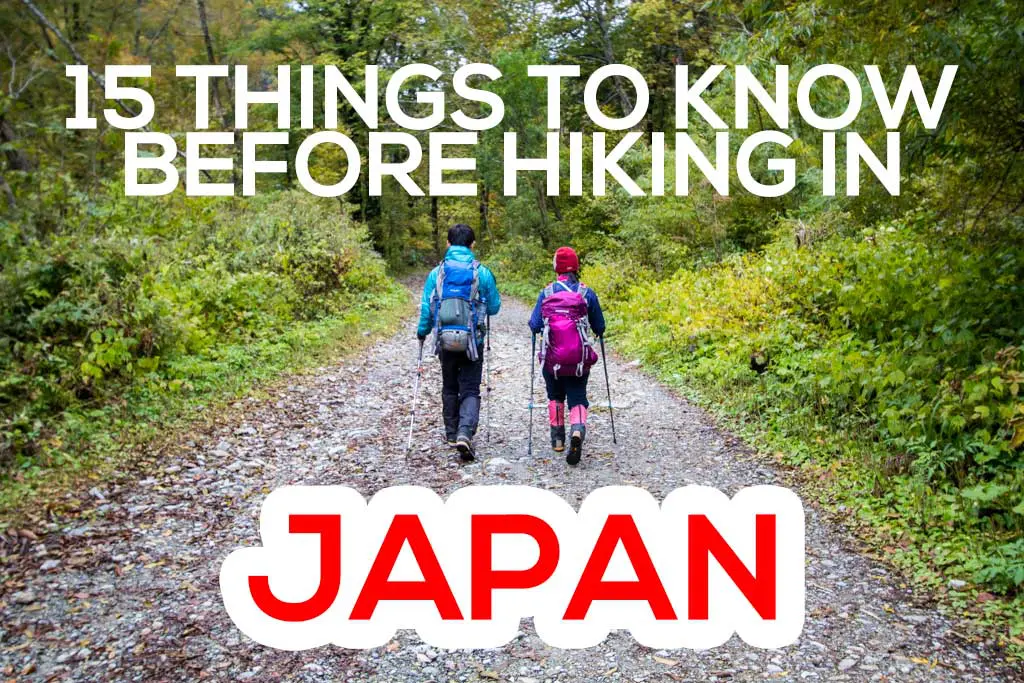
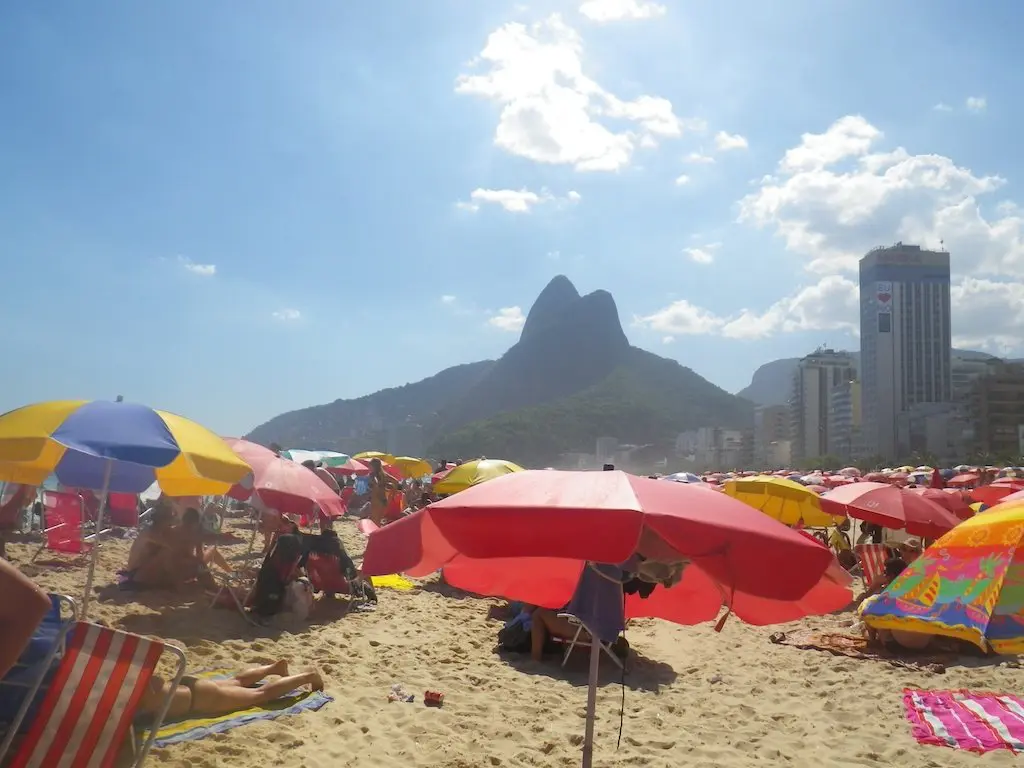
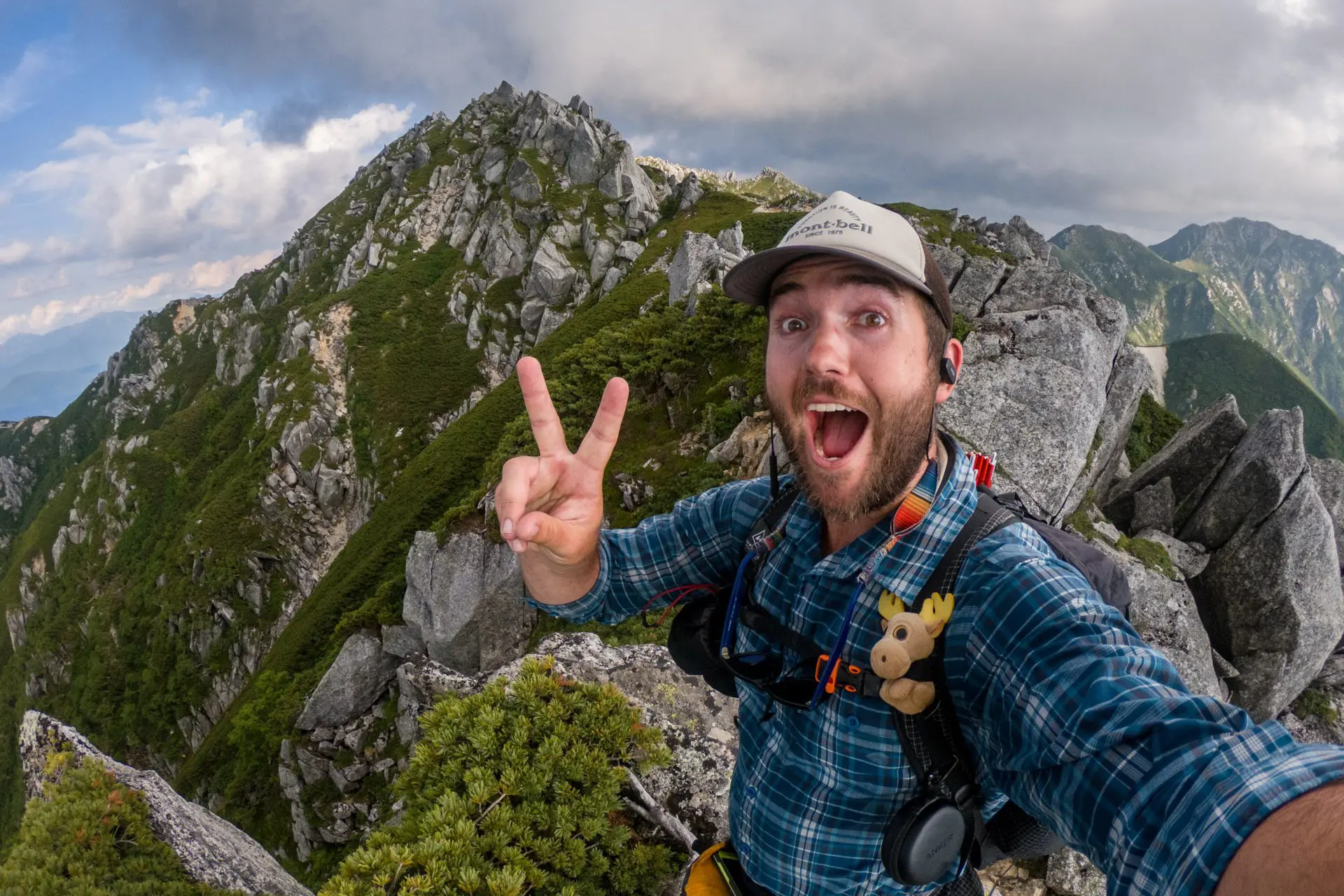
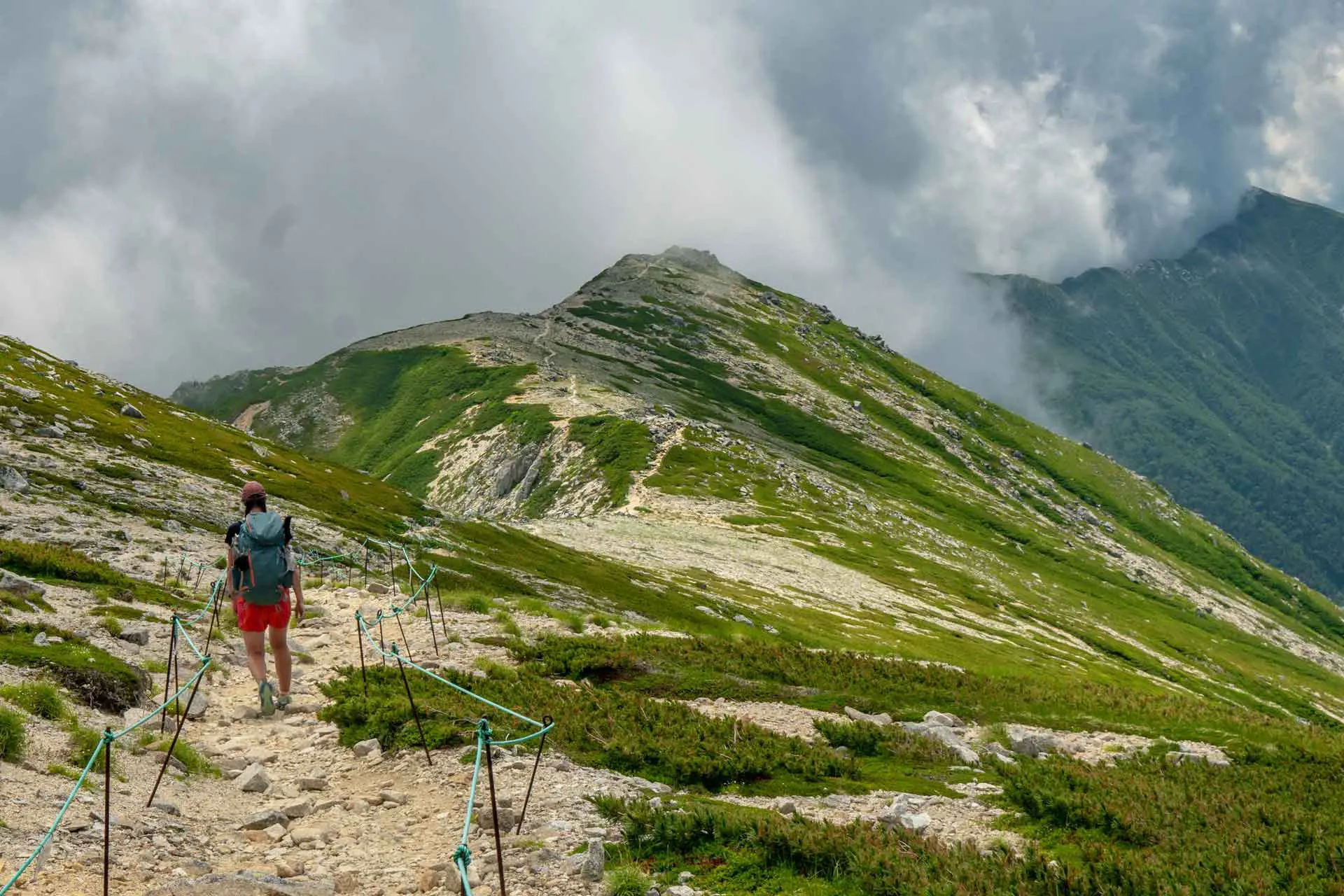

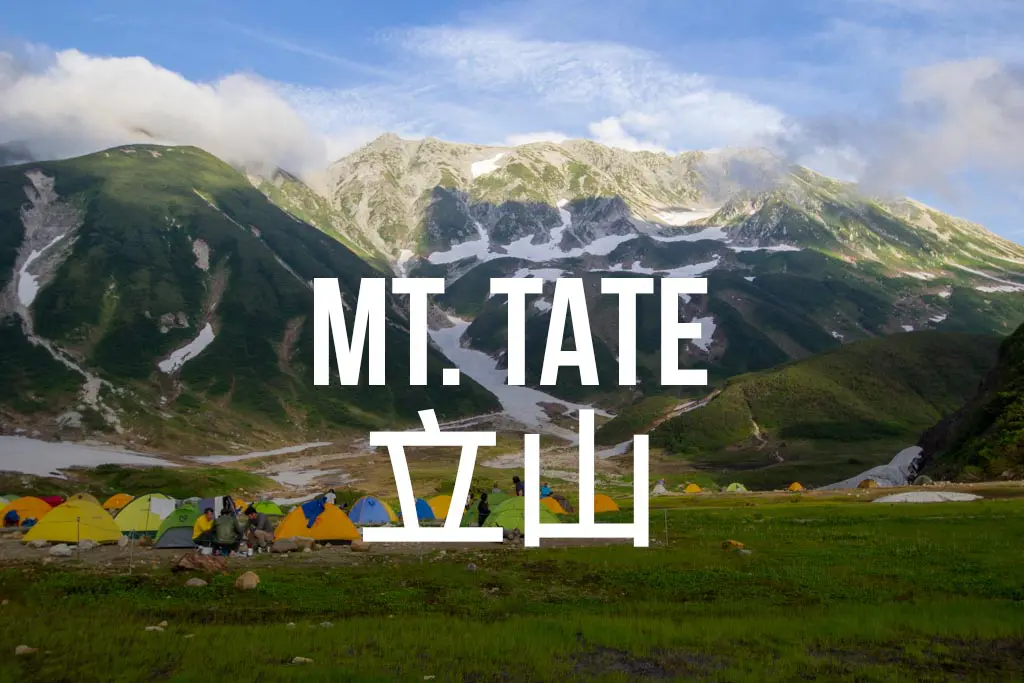

Hi Mac!
Loved this. In july I will be backpacking Japan for a month and a half with my brothers, is it possible to sleep in the woods or some place for free? If so, do you have any tips?
Oh and what temperature should my sleeping bag be able to hold for that month if I don’t want to sleep in a tent?
Thank you so much!!
We need more people exploring the world like you (and not those Sunday hikers)
Wild camping in Japan is not as easy as in many places. For one, the terrain does not lend itself to wild camping, as the mountains are pretty sheer. Typically, the only flat spots are either the trail itself or have already been taken by a hut.
However, established campgrounds are common —sometimes at trailheads, sometimes in the mountains.
In July, I would use a 20F/-9C or 32F/0C bag in the highest mountains in Japan, but it depends on personal preference.
Can we hike without booking accomodation. It appears you are expected to book ahead so plan your trip. Is this necessary.
Hike or stay overnight? If the latter, stay overnight in a lodge? Need more context to answer your question.
Hello Mac! Thanks for the great article! I laughed and then got terrified by the hornets..:D I’m deffinitly going to check more of your stuff! :) I’m going to Japan in July-August and would love to visit some of the beautiful mountains.. not sure which yet, though.
I’ve read in the comments below that you have experience with stealth camping too… Do you know how it is from the legal side? Have you ever encountered any problems with it in Japan?
I’ve never encountered a problem stealth camping, but I’m pretty sure it’s illegal everywhere.
Great article, made me laugh. I lived in northern Japan for 5 years and can relate to the above. But, I just moved to Osaka and looking for some good trails to get out on for backpacking. Any suggestions?
The closest mountain I’ve been up to Osaka is Ibukiyama. If you can get to the Kita Alps it would definitely be worth your time.
great post! do you know any good hiking trails for a beginner. I will be solo and in Japan in February
Unfortunately, if you’re looking to climb mountains, most will still be covered in snow in February (which doesn’t translate to beginner). I suggest looking into nature trails in the Kansai region or on Kyushu.
Great write up. i live way up north where a couple people a year get munched by bears, but mostly they are stubborn old folks looking for those nasty bitter vegetables to add to their miso soup. think Akita/Aomori/Iwate area.
the bear bells…. Its pretty damned annoying. as for the gear they rock, Hiking is no different than any other outdoor activity for the locals. Be it MX,snowboarding,skiing, you just aren’t part of the bigger machine unless you have the latest,bestest (read-most expensive) gear. Its much more about the fashion over the functionality here, and whatever trend is hot, thats what the local outfitters will be hawking.
have done quite a few multiday hikes on the Michinoku Shiokaze trail, and people look at me like im nuts. 25l bag, tiny trekking pole tent sometimes an alcohol stove, sometimes not. shorts and a tshirt. while my fellow hikers are sporting the latest in Mt Everest gear. 20-30 kg of everest gear… what the hell do you need mountaineering gear for when you are hiking the coast?
anyway, after living here for 25 years, the novelty of being one of the few foreigners on a lot of the local trails, has really worn off, and i find myself camping further and further away from the swiss family yamamotos, and enjoy the solitude.
BTW, i had one of those giant hornets get stuck between my face and my helmets cheek pad. 4th gear wide open down a rutted straight away, is no time to panic and try to reach in to get that monstrosity out. I can say that the sting is horrendous, and its not just 1. they can keep going for as long as your fleshy bits are annoying them.
This is my nightmare.
Happy to see I’m not the only one who has made these observations. I may be up north next summer if everything goes according to plan.
I am looking for a good hiking trail for october/november time in Japan – I tend to bivvy camp, try to hike as light as I can and am very slow. I am also hiking solo and don’t cook. Any recommendations?
Looking for something at least 3- 5 days
You could string together some nice hikes in the Northern (Kita) Alps. Check out my writeups at: https://www.halfwayanywhere.com/japan-hikes/
Hey Mac, loved this article !
I am living in Japan right now and I am planning a 1 mont hike in here. Preferably without needing to sleeps in lodges (is it even possible ?).
I’ve seen the Shikoku pilgrimage, would you know of some other route that can cover more than a week period?
Last but not least, when before september would you recommend to hike ?
Many thaks !
You don’t have to sleep in the lodges, but they will make you pay for camping. Stealth camping is definitely possible.
I would look at doing a traverse of the Kita Alps if you’re really looking for an adventure. Usually you can get up there by the end of June.
Good luck!
Hey there! I just landed on your post while planning my trip. I’ll be visiting Japan in April, and I’m wondering if you know about any good backpacking trails (or even great day hiking) that I can do during that time of year. It appears that most parks / trails don’t open till ate April or may due to the snow. Perhaps there’s something in southern Japan or at a lower altitude that you know of? Thank you! :)
I don’t know much that is at the lower altitudes, but if you’re down on Kyushu, Shikoku, or the Kansai area then you might be able to get onto some good hikes.
I identify with this a lot! I climbed Mt. Fuji (Gotenba of course) in a pair of 2 year old, $30 Reebok trainers with holes in.. Really enjoyed reading this!
Happy to hear I’m not alone!
Ah, Tokyo day hikers. You can’t hike 4 hours without a ginormous pack and all matching gear. All girls must wear leggings and hiking skirts and have collapsed trekking poles dangling from their wrists (looks dangerous). People bring stoves on day hikes to make hot lunch! Also, everyone has lunch on the same summit.
It wouldn’t really be a hobby if you didn’t spend a ton of money on equipment and gear first.
Thanks for this post! Makes me smile since i just got back from my first solo hike in Japan last month. Can confirm. Well except i haven’t seen them giant hornets. Nor a bear. Seen a few spoors though. Just to add my 2 cents:
– Checking out time from mountain huts is 8am. Check in before 4pm. Reservation is not required but do check that the hut is open. Some close by early October.
– Did a bit of research about bear bells and decided to get one. For the bears’ sake. Japan has a zero tolerance policy and human-bear encounters can result in a death sentence for the bear.
– Greeting each other with ‘konnichiwa’ gets a bit awkward when some travel in large groups of 20+ hikers.
– Greeting is probably good form especially when you hike alone after sunset, without a headlight, sans bear bell (i just got off the boat). The poor chap froze in the middle of the road he probably thought i was a bear! Lol.
Will be waiting for your hiking kanji post! Cheers.
I also need to write about bear bells in general since I remember reading something that said bears just just ignore them altogether. That’s interesting to know about Japan’s bear-human encounter policy. Maybe that’s why I never see any bears.
I’ll get on the kanji post soon! I should be studying anyways.
Thanks! Those hornets are not to be messed with. I’d take my chances with a bear encounter any day.